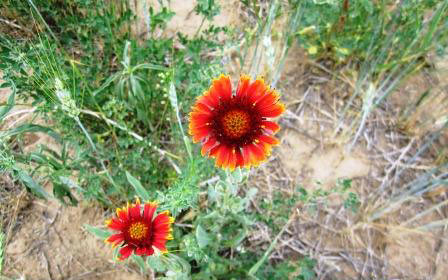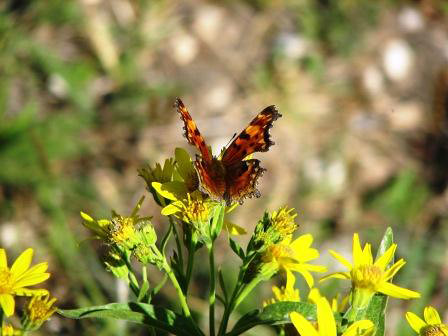
Lester and Bonnie Drake wanted to increase the plant diversity on their Campbell County, Wyo. ranch, and they were able to help pollinators, such as bees and butterflies, in the process.
With more types of grasses, more food is available for cattle at different times. And for the pollinators, more grasses lead to more blooms.
The Drakes were the first to establish pollinator habitat in their county with the help of USDA’s Natural Resources Conservation Service. They’re enrolled in the Conservation Stewardship Program, the agency’s Farm Bill program geared to conservationists who want to take their conservation investment to the next level. The program provides technical and financial assistance for landowners wanting to implement conservation.
“We are pleased with the success of the planting and the benefits it has added to our ranch,” Bonnie Drake said of the improvements to the 4,100-acre Ivy Creek Ranch, home to cattle and winter wheat.
They chose land with lower producing soils, and they created a 14-acre permanent planting of pollinator habitat consisting of nine species of flowering plants. By the second year, all of the flowering plants were thriving. They have also seen an increase of butterflies and other insects in the general area.
NRCS works with landowners like the Drakes to establish pollinator habitat. That’s because pollinators play an important role in the environment and agricultural industries, as pollinators are responsible for one out of every three bites of food. Animal pollinators include bees, butterflies, moths, wasps, flies, beetles, bats and hummingbirds.
In addition to supporting pollinators, native plant habitat will attract beneficial insects that feed on crop pests and lessen the need for pesticides. Pollinator habitat provides habitat for other wildlife and can serve as windbreaks, help stabilize the soil, improve water quality and create more scenic vistas.
As part of the program, landowners plant a half an acre of pollinator habitat for every 40 acres of eligible cropland. The pollinator habitat areas must include a minimum of nine flowering plants species including forbs, legumes, vines, shrubs and trees. The plants must bloom at different times of the year.
“We enjoy the colors of the flowers but most of all, we like the diversity of insects attracted by the pollinator plantings,” Lester Drake said.

